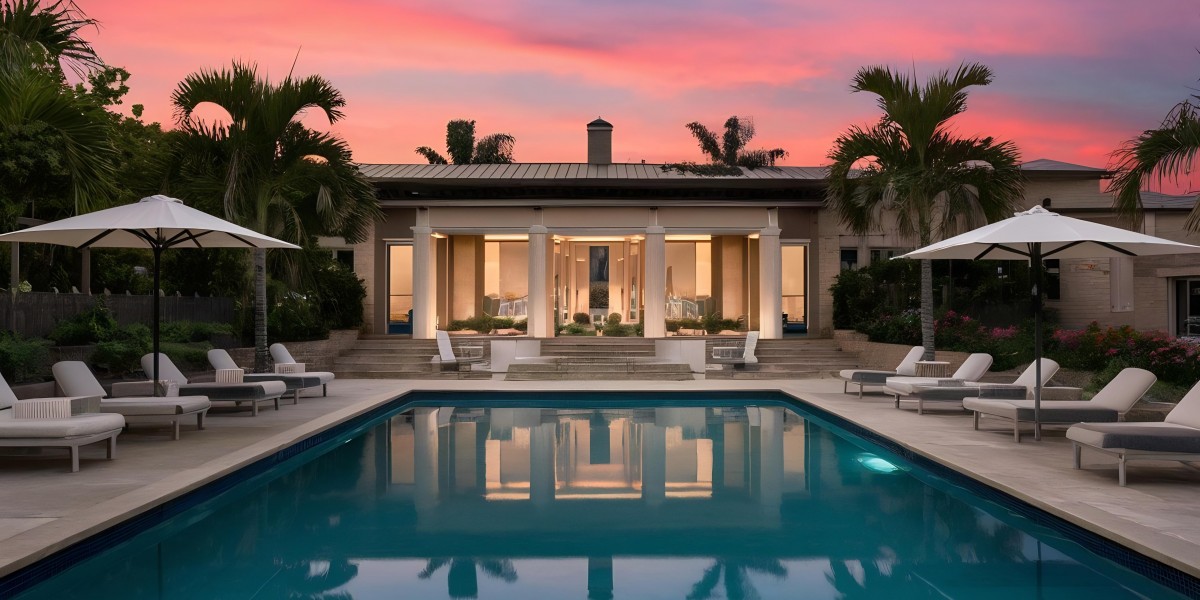In the ever-evolving world of real estate, residential luxury property continues to stand as a benchmark of prestige, lifestyle, and architectural innovation. Yet, what defines “luxury” in housing today goes far beyond sheer size or prime location. Modern luxury living is now synonymous with exclusivity, personalized design, sustainability, smart technology, and an elevated lifestyle experience that blends comfort with sophistication.
As global wealth distribution shifts and buyer expectations evolve, developers and investors are reimagining what luxury means to different demographics. Today’s discerning buyers seek homes that not only symbolize success but also deliver a sense of wellness, privacy, and future-proof value.
1. Location: The Irreplaceable Factor
The old saying “location, location, location” remains the cornerstone of real estate, and luxury properties are no exception. Prime addresses in metropolitan cities, serene beachfronts, or exclusive gated communities are often the first markers of luxury.
Urban Prestige: In major cities, proximity to business hubs, cultural landmarks, fine dining, and entertainment drives demand for residential luxury property. A penthouse overlooking a skyline or a residence near exclusive districts commands significant value.
Seclusion & Privacy: Equally, some buyers prioritize serenity over bustle. Secluded estates or villas in quieter, exclusive areas reflect another facet of luxury, offering tranquility without sacrificing accessibility.
Location is not just about physical address—it’s also about community, connectivity, and the intangible aura of prestige that comes with a specific area.
2. Design & Architecture: Blending Aesthetics with Functionality
A defining trait of modern luxury homes is their architectural uniqueness. Rather than standardized designs, residential luxury property showcases distinct styles that emphasize individuality.
Timeless Architecture: Many properties are designed to balance modernity with timeless elegance, incorporating clean lines, high ceilings, and expansive glass façades.
Interior Excellence: Interior spaces are tailored with meticulous attention to detail. Premium materials such as marble, rare woods, and bespoke finishes reflect craftsmanship.
Seamless Indoor-Outdoor Flow: Open layouts, floor-to-ceiling windows, terraces, and landscaped gardens integrate natural surroundings into the living experience.
Luxury design today is not just about aesthetics; it’s about creating a holistic environment that enhances daily living.
3. Space & Exclusivity: The Value of Privacy
Size matters in luxury properties, but exclusivity is what truly elevates them. Larger plots, expansive floor plans, and limited availability create a sense of rarity.
Privacy-Driven Layouts: Gated compounds, private elevators, and personal entrances ensure maximum discretion.
Low-Density Developments: Many high-end buyers prefer residences in communities where fewer units allow for more open space and reduced congestion.
Exclusivity adds emotional value, making a property not just a home but a statement of distinction.
4. Amenities That Redefine Everyday Living
Modern luxury properties are equipped with amenities that go beyond convenience—they aim to enrich lifestyle.
Wellness Features: Spa rooms, gyms, yoga studios, and meditation gardens highlight the rising focus on health and well-being.
Smart Living: Integrated home automation systems for lighting, climate, and security reflect technological sophistication.
Leisure Amenities: Infinity pools, home theaters, wine cellars, and art galleries create spaces where lifestyle merges seamlessly with luxury.
These amenities redefine daily routines, elevating them into personalized luxury experiences.
5. Sustainability: The New Definition of Prestige
Environmental awareness has shifted buyer priorities. In today’s market, sustainable features are no longer optional—they are a hallmark of luxury.
Green Building Practices: Energy-efficient systems, solar power, and sustainable construction materials appeal to eco-conscious buyers.
Smart Energy Management: Homes with systems that minimize carbon footprint represent responsible luxury.
Well-Being Integration: Air purification systems, water recycling, and biophilic design ensure healthier living environments.
Sustainability adds long-term value, positioning luxury properties as future-proof investments.
6. Technology: Intelligent Living
Technology has become integral to defining modern luxury homes. Buyers now expect cutting-edge systems that enhance convenience and security.
Smart Security: Advanced surveillance, biometric access, and AI-driven safety measures ensure peace of mind.
Home Automation: Control over entertainment, lighting, and climate through mobile apps or voice commands adds ease.
Virtual Connectivity: Luxury homes now integrate spaces for remote work, equipped with soundproofing and high-speed digital infrastructure.
Technology creates an adaptive environment where luxury meets practicality.
7. Personalization: Homes as Reflections of Identity
Unlike mass-market properties, luxury residences are designed to reflect the individuality of their owners.
Tailored Interiors: From curated art collections to custom furniture, personalization makes each property unique.
Flexible Layouts: Buyers often seek the ability to modify spaces according to lifestyle—whether for family gatherings, home offices, or entertainment.
Cultural Integration: Homes that respect and incorporate cultural or regional design sensibilities hold stronger appeal for global buyers.
In this sense, luxury is less about extravagance and more about personal expression.
8. Market Trends Driving Residential Luxury Property
Several trends define the current market:
Globalization of Wealth: Buyers often purchase properties abroad for investment, lifestyle, or secondary homes.
Post-Pandemic Shifts: Remote work and health awareness have fueled demand for larger spaces with wellness features.
Younger Buyers: Millennials and Gen Z high-net-worth individuals prioritize sustainability, technology, and unique design in their luxury purchases.
These trends highlight how the definition of luxury is dynamic, shaped by social, economic, and cultural shifts.
9. Emotional Value: Beyond Monetary Worth
Luxury properties are not only financial assets but also emotional investments. They serve as symbols of achievement, family legacy, and lifestyle identity.
Prestige Factor: Owning a luxury property represents success and influence.
Legacy Building: Many buyers see these homes as long-term investments to pass on to future generations.
Emotional Fulfillment: The comfort, privacy, and aesthetic appeal of luxury homes enhance quality of life beyond material value.
Final Thought: Redefining Luxury for a New Era
The definition of residential luxury property has expanded from size and location to a more holistic concept that encompasses technology, sustainability, wellness, exclusivity, and personalization. Today’s luxury is about creating a home that offers not just prestige but also functionality, harmony with nature, and an enriched living experience.
For those aiming to invest or even sell luxury property in Dubai, understanding these evolving standards is critical. The luxury market is no longer about extravagance alone—it is about aligning with global trends, adapting to modern lifestyles, and meeting the needs of a new generation of buyers who see luxury not only as a symbol of success but as a way of life.








